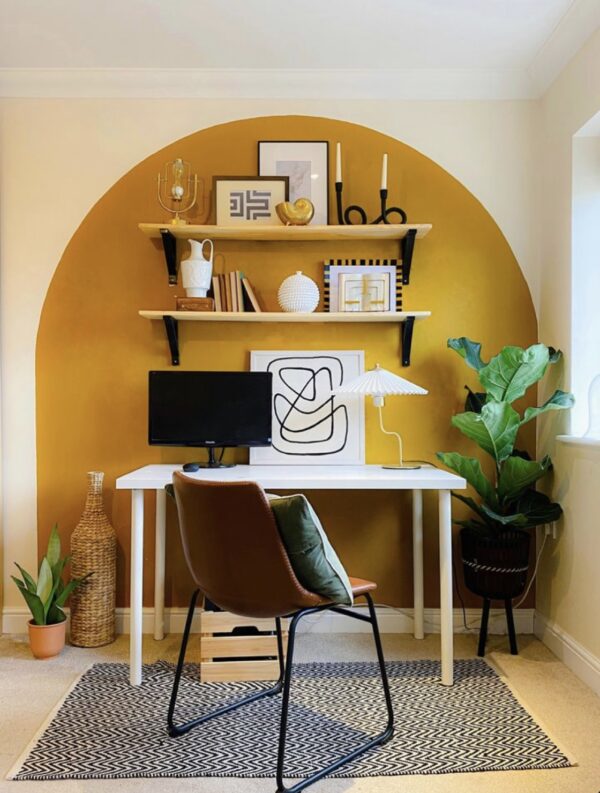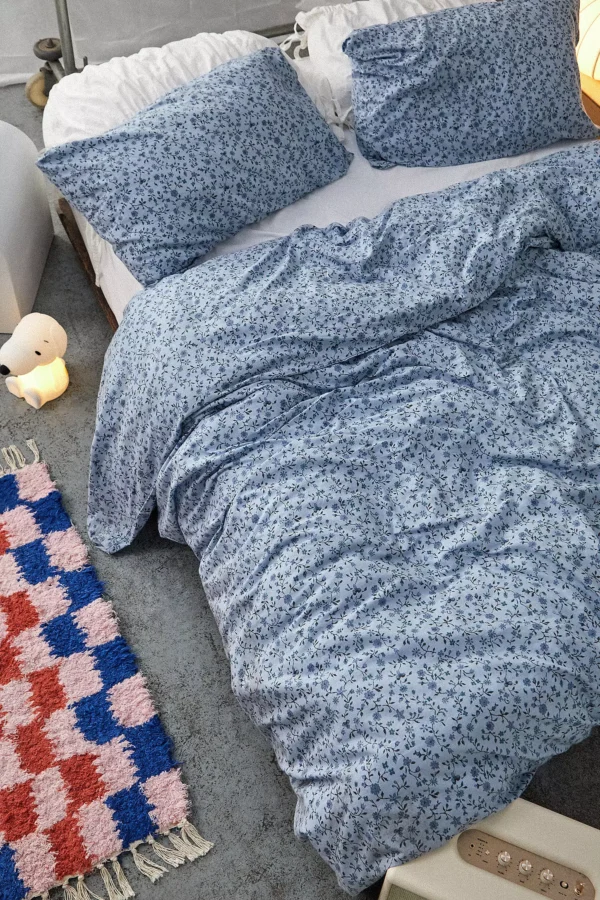
Feeling Demotivated WFH? Expert Reveals Interior Design Hacks to Boost Productivity

With 39% of Brits still working from home in 2023, it’s clear that remote and hybrid working is now part of everyday life for many. But how has this impacted our homes?
A new study from Barratt London reveals that over 3 out of 4 Brits (76%) admit that their relationships with their homes have changed since working remotely, while one in nine (11%) now love their homes less.
In light of these findings, Barratt London have teamed up with expert interior designer Zara O’Hare from Land of Rugs to provide top design tips for remote workers, including how to separate your work and home space, how often to change up your workspace, and how to maximise small working spaces.
1. Incorporate natural elements to reduce stress.
“If you are feeling negatively impacted by your working from home setup then I suggest adding plants and incorporating biophilic design into your space. Studies have shown that exposure to nature can reduce stress levels and improve mental health, while people who work with natural elements are more productive than those who don’t.”
2. Utilise vertical space and add wall mounted or corner desks if your working space is small.
“If you are working in a small space, optimising your desk setup is one of the most important things you can do. Go for a wall-mounted desk or a corner desk to utilise space that might usually be neglected and use a monitor/laptop stand to keep the area tidy and free up space.”
“In a small area, utilising vertical space is a must. Installing shelves, wall-mounted organizers or a peg board above your desk will provide additional storage and keep essential items within reach without cluttering your desk.”
3. Add natural lighting to make your working space feel bigger.
“Maximising exposure to natural light will also help to make your space feel bigger. Use sheer or light-coloured curtains to increase light penetration and create an airy atmosphere. Natural light will help make the small space feel more open and spacious. Remove any clutter from your windows and ensure there are no obstructions.
“You can also consider enhanced lighting, as the more light that gets reflected around your house will make your room feel bigger and minimiseany overcast shadows. You can also enhance your lighting by using brighter LED bulbs and adding ambient lighting such as lamps and fairy lights.”
4. Separate your work and home devices
“One of the easiest ways to separate your workspace from your home is to have a separate area with separate devices. This means having a set place to do work, that you don’t use unless it’s during your working hours. I would also make sure that you have a set of devices that stay in this area, such as a work phone and laptop/computer. This way, you won’t have your work email and messages on your personal devices and will only look at them when you enter your workspace.”
5. Repaint your workspace in colours that uplift the mood to create a refreshing environment
“If you are feeling demotivated when working from home then I suggest enhancing your work space with a fresh lick of paint. Colours play a massive effect on mood, and with most offices being white or grey, they are usually quite boring and dull. Opt for bright and uplifting colours such as yellows, greens, or blues. These colours can enhance your mood and create a refreshing environment.”
“Upgrading your textiles is way to make small changes, updating things like curtains, cushions, rugs and throws can leave you with a sense of contentment and joy. However, make sure that you pick colours and patterns that resonate with you otherwise you will be second-guessing your choices the whole time which can make your room feel negative.”
The study findings found that 50% of Brits have redecorated their homes since working from home.
6. Rearrange your workspace regularly to improve productivity and creative thinking
“How often you change your workspace comes down to personal preference. If you find that your motivation and productivity are waning, then it might be a good idea to consider rearranging your workspace. Changing your layout or bringing in new décor items can help to rejuvenate your motivation and bring you a fresh perspective of your workspace.”
“You can change your workspace seasonally s by incorporating seasonal décor, adjusting your lights to suit the change in daylight or rearranging your furniture to suit the seasonal ambience.”
“If you work in a creative area then I suggest that you change your workspace more often. Changing your workspace periodically can help stimulate new ideas and inspiration. Different layouts will create different atmospheres which can help to trigger creative thinking.”
7. Add personalised items such as photos and scented candles to create an inviting workspace
“Consider adding personal items to your space. Displaying photographs, artwork and other items that hold sentimental value will make your space feel more personal, comfortable and at ease.”
“Another way to make your space more inviting is to add pleasant scents by using scented candles, diffusers or essential oils to create a pleasant aroma in your workspace.”
You can find more information about the study here: https://www.barratthomes.co.uk/new-homes/london/working-from-home/













































